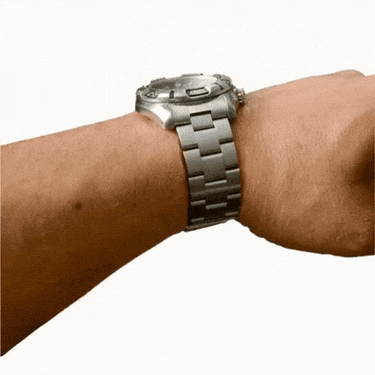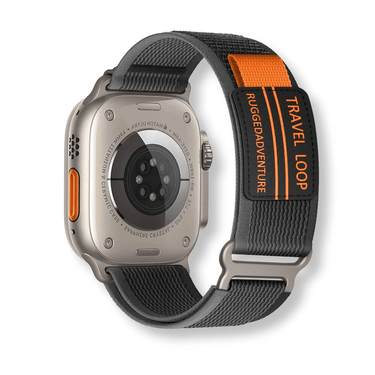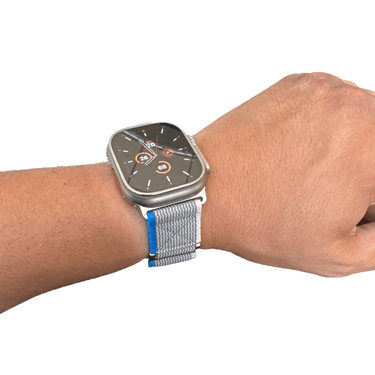Fashion is an ever-evolving industry that constantly adapts to new trends and styles. However, the environmental impact of fast fashion has become increasingly concerning, as it generates tons of waste and contributes to water pollution and greenhouse gas emissions.
To mitigate this issue, going green has become a popular concept that revolves around sustainability, eco-friendliness, and ethical practices. Going green means adopting a lifestyle that values the conservation of natural resources and relies on sustainable alternatives to reduce waste production.
In the fashion industry, going green means producing clothes and accessories in a way that minimizes their negative impact on the environment while still being fashionable. With consumers becoming more aware of environmental issues, many fashion brands have started incorporating sustainable practices into their production processes.
Brief Overview of Fashion Industry's Impact on the Environment
The fashion industry is among the most polluting industries in the world due to its significant contribution to waste production and carbon emissions. The industry consumes vast amounts of water during fabric production processes while also discharging toxic chemicals into rivers that affect aquatic life. Additionally, textile waste makes up a considerable portion of landfills globally.
Fast fashion practices encourage consumers to buy cheap clothing items made from synthetic materials with short lifespans leading them to discard them quickly. This leads to exponential amounts of discarded clothing left in landfills or incinerated improperly; this process releases harmful chemicals into our air.
Introduction to Vegan Watchbands as a Solution
Watchbands are essential accessories that complement our attire; however, traditional watchband materials like leather or metal have significant environmental impacts during production processes such as chemical use or animal cruelty concerns associated with leather straps. The vegan watchbands are an eco-friendly alternative made from synthetic materials like cork or pineapple leather rather than animal skins. The vegan watchband production process has less environmental impact as compared to traditional watchbands.
These materials are relatively easy to recycle, repurpose, and produce with no harmful chemicals involved in the process. Given that the fashion industry is often criticized for its negative impact on the environment, vegan watchbands are a step towards eco-friendliness while still being fashionable.
The Problem with Traditional Watchbands
Exploration of Traditional Watchband Materials
Traditional watchbands are made from a variety of materials, including leather, metal, and synthetic materials like silicone or rubber. Leather is the most popular choice for watchbands due to its durability and classic look. However, the production of leather has a significant negative impact on the environment.
The process involves raising livestock for their skin, which requires large amounts of land and water resources. The chemicals used in tanning leather can also be harmful to human health and the environment.
Metal watchbands are another popular option. They provide a sleek, modern look that complements many styles.
However, metals like stainless steel or titanium come at an environmental cost too. The mining operations for these metals require large amounts of energy and create significant waste.
Environmental Impact of Traditional Watchband Production and Disposal
The production of traditional watchbands has a significant impact on the environment. Leather production is resource-intensive as mentioned earlier, requiring large amounts of land and water resources for livestock farming as well as harsh chemicals in tanning processes that are released into surrounding environments.
Metal mining operations require huge amounts of energy while creating waste that pollutes nearby water sources or soil depending on extraction methods used by companies. In addition to production wastage concerns there is also wastage created by disposal method which includes animal skin accumulation over time affecting local waste management systems or disposal into landfill sites causing long-term contamination.
Health Concerns Associated with Traditional Watch bands
Leather processing relies heavily on toxic chemicals such as chromium which can cause serious health problems for workers involved in the process like excessive exposure leading to cancer risk or respiratory illnesses. Similarly, metal processing can lead to toxic exposure through inhalation for workers; potentially leading individuals down harmful paths such as lung disease or even cancer when over-exposed consistently. Choosing a vegan watchband can eliminate the risks of harmful chemicals or toxins affecting your health, as recycled plastic or plant-based materials offer safe alternatives.
Vegan Watchbands: A Sustainable Solution
As consumers become more aware of environmental issues, the demand for eco-friendly products is growing. Vegan watchbands offer a sustainable solution to traditional watchbands that are made from animal leather or metal. These watchbands are made from plant-based or recycled materials and have numerous advantages over traditional watchbands.
Explanation of vegan materials used in watchband production
There are several vegan materials used in the production of watchbands, including cork, pineapple leather, and recycled plastic. Cork is a highly sustainable material that is harvested without harming trees.
It is durable and water-resistant, making it an ideal choice for watch straps. Pineapple leather is another eco-friendly alternative to animal leather that is made from pineapple leaf fibers.
This material has a similar texture and feel to animal leather but is much more sustainable. Recycled plastic is also becoming popular as it helps to reduce waste and pollution by repurposing existing materials.
Environmental benefits of vegan watchbands
The production of traditional watchbands has a significant impact on the environment due to the use of animal products or metal. Vegan watchbands offer numerous environmental benefits as they often use materials that are renewable or recycled. For instance, cork comes from the bark of cork oak trees which can be harvested without causing harm to the tree itself.
Pineapple leather uses pineapple waste instead of adding to landfill waste like other synthetic leathers do. In addition, vegan watches reduce carbon footprint by not utilizing animals for their products nor emitting harmful chemicals into water sources during production.
Health benefits associated with vegan watchbands
In addition to being environmentally friendly, vegan watch bands also have health benefits compared to traditional ones made from animal hides treated with harsh chemicals.. These substances can cause skin irritation or even cause allergic reactions. Vegan watches, on the other hand, use materials that are free from harmful chemicals and are less likely to cause skin irritation. Cork, for example, is naturally hypoallergenic and anti-bacterial, making it an excellent choice for people with sensitive skin. Pineapple leather also has properties that are similar to animal leather while being less likely to cause skin irritation.
Vegan watches are an all-around better option than traditional ones due to their eco-friendliness and health benefits that allow individuals to have comfort and peace of mind when wearing them. The demand for sustainable fashion is increasing every day and vegan watchbands offer a perfect answer without compromising style or quality.
The Rise of Vegan Watchbands in Fashion
Overview of fashion industry's shift towards sustainability
The fashion industry has been notorious for its high levels of waste and pollution. However, in recent years, there has been a significant shift towards sustainability. Many big-name brands are adopting eco-friendly practices such as using recycled materials, reducing water usage, and promoting fair labor practices.
This change has come from consumer demand for more sustainable fashion and a growing awareness of the environmental impacts of the fashion industry. Sustainable fashion is now becoming mainstream, with more brands incorporating eco-friendly materials into their collections.
This includes vegan watchbands made from materials like cork, pineapple leather, and recycled plastic. By switching to these materials instead of traditional leather or metal, brands are reducing their environmental impact while still producing stylish and high-quality products.
Examples of brands incorporating vegan watchbands into their collections
Many popular watch companies have already started to incorporate vegan watchbands into their collections. For example, Votch uses vegan leather made from pineapple fibers to create stylish and sustainable watches. LaBante London uses cork as a sustainable alternative to leather in its watches while also ensuring fair working conditions for its employees.
Other notable examples include Hurtig Lane's use of recycled plastic in their watch straps and MVMT's use of vegan leather options for some models. These companies show that it is possible to produce fashionable products while still being environmentally conscious.
Consumer demand for sustainable fashion
Consumer demand is a significant driving force behind the rise of sustainable fashion. According to a Nielsen survey, 73% of millennials are willing to pay more for sustainable products.
Brands that prioritize sustainability appeal to this growing demographic who care about the environment and social responsibility. In addition to millennial consumers' preference for sustainability criteria when making purchasing decisions, Gen Z consumers take it one step further by boycotting brands that do not prioritize sustainability.
This highlights the importance of sustainable initiatives in the fashion industry and further incentivizes brands to shift towards sustainability. The rise of vegan watchbands in fashion is just one of many examples of the fashion industry's shift towards sustainability.
More and more brands are adopting eco-friendly practices and materials to reduce their environmental impact while still producing high-quality products. Consumer demand for sustainable fashion is driving this change, highlighting the importance of ethical production in today's world.
Niche Subtopics:
Cork as a sustainable material for vegan watchbands
Cork is an environmentally friendly material that is becoming increasingly popular in the fashion industry. Not only is cork a sustainable resource, but it also has many benefits for use in watchbands. Cork is harvested from the cork oak tree without harming the tree, making it an eco-friendly alternative to traditional leather.
Additionally, cork is durable and water-resistant, making it a practical choice for a watchband. The process of creating cork watchbands begins with the strips of bark from the cork oak tree being boiled and flattened to create thin sheets.
These sheets are then adhered to a textile backing to create a flexible and durable material that can be cut and styled into various designs of watchbands. This process results in a high-quality product that looks great while also being environmentally conscious.
Pineapple leather as an eco-friendly alternative to animal leather
Pineapple leather, or Piñatex, is another sustainable material that has gained popularity in recent years. Piñatex is made from pineapple leaves which are typically discarded during pineapple harvesting.
These leaves are transformed into a non-woven mesh that can be used as an alternative to animal leather. Piñatex has many benefits over traditional leather.
It's breathable, lightweight, and water-resistant while still being durable enough to make high-quality watchbands. Additionally, because Piñatex uses waste materials from pineapple production rather than requiring additional farmland or resources like traditional leather production does, it's much more sustainable.
Recycled plastic as a sustainable option for vegan watches
Recycled plastic is another eco-friendly option for creating vegan watches that have minimal impact on the environment. Recycled plastic comes from post-consumer waste such as recycled milk jugs or soda bottles which would otherwise end up in a landfill.
By repurposing this waste, recycled plastic helps reduce the amount of plastic in landfills and the ocean. The process of creating watchbands from recycled plastic involves cleaning and melting down the plastic into pellets.
These pellets can then be molded into various shapes to create watchbands that are durable and lightweight. Additionally, because recycled plastic is so versatile, it can be colored to match any style or design preference.
Rarely Known Small Details:
How cork is harvested without harming trees
Cork oak trees are not cut down to harvest cork. Instead, bark is stripped from the tree every nine years by skilled workers using a specialized axe.
This process causes no harm to the tree itself and actually encourages growth as it stimulates new bark growth. By harvesting cork this way, not only are we able to sustainably produce watchbands but we're also able to maintain natural habitats for many wildlife species that rely on these forests for survival.
The process behind creating Piñatex
Creating Piñatex involves several steps: first, pineapple leaves are collected from farmers who would otherwise discard them as waste. The leaves then go through a mechanical process where they're turned into fibers which are then transformed into a non-woven mesh.
This mesh is then sent off for finishing where it's given its final desired texture before being used as an alternative material for leather products like watchbands. This process has several benefits beyond just being eco-friendly - it also supports local farmers and communities by providing income opportunities through sustainable agriculture practices.
Conclusion:
Vegan watchbands made from sustainable materials like cork, Piñatex or recycled plastics offer a great solution for consumers who want to make responsible choices when it comes to their fashion choices while also enjoying great quality products. With increased awareness about environmental issues surrounding traditional leather production methods such as deforestation, water pollution, and greenhouse gas emissions, these alternative materials offer an optimistic perspective for a more sustainable future. By adopting eco-friendly practices and investing in these innovative materials, we can all play a significant role in reducing our carbon footprint and preserving the planet for generations to come.




























